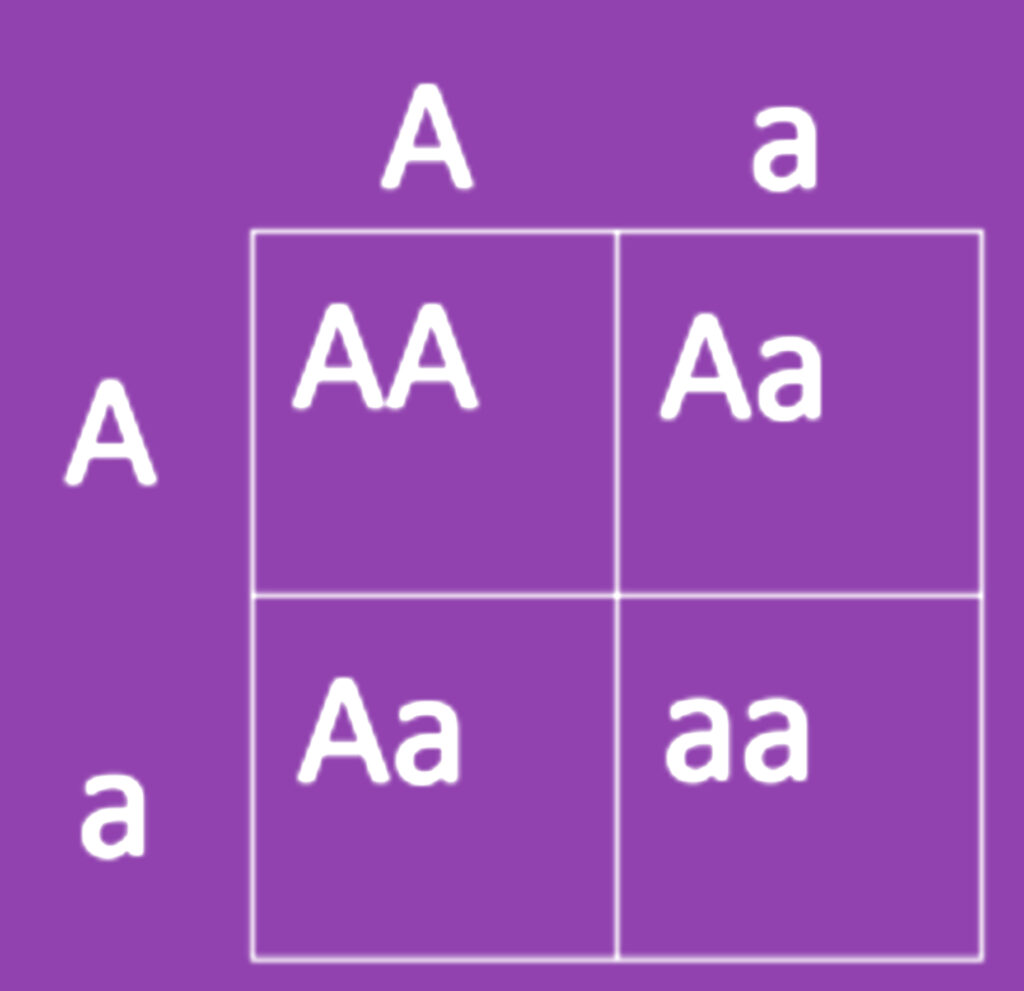Mendelian Heredity
As we have previously discussed, the Mendelian theory of inheritance attempts to explain a sexually reproducing organism’s physical traits based on the alleles that the organism inherited from its parents. To review vocabulary:
- A trait is something that an organism displays. Your hair color, eye color, earlobe shape, and height are all traits that you display. Traits are also commonly called phenotypes.
- An allele is a unit of genetic information that an organism inherits from its parents. If an organism has a certain combination of alleles, it will display a certain trait. The combination of alleles you have for a certain trait is called your genotype.
- If a trait requires just one allele to be displayed, then the allele associated with the trait is called a dominant allele.
- If a trait requires an allele to be inherited from both parents in order for the trait to be displayed, then the allele associated with the trait is called a recessive allele.
- If an organism has inherited two of the same alleles (one from each parent) then the organism is said to have a homozygous genotype. For example, if an organism has two of dominant alleles, then it is said to be homozygous dominant.
- If an organism has inherited one copy of a dominant allele, and one copy of a recessive allele, then it is said to have a heterozygous genotype.
Mendelian inheritance holds true for a number of different traits across organisms. In humans, the ability to roll your tongue ( that is, make a taco shape with your tongue) is a purely Mendelian trait. Having the ability to roll your tongue is associated with a dominant allele. Lacking the ability to roll your tongue is associated with a recessive allele. In the pea plant, a yellow-colored pea is associated with a dominant allele, while a green-colored pea is associated with a recessive allele.
Each parent has two alleles — one from each of their parents, but they are only capable of giving one allele to their offspring. This means that, if you know the genotypes of each parent, you will be able to find the probability that the parents’ child will display a certain trait. One common tool you can use to visualize this process is called the Punnett Square:

In the example above, each parent (represented by the letters above and to the left of the square) is heterozygous for a specific trait. As each parent can contribute one of two possible alleles, there are four possible scenarios that an offspring can undergo (represented by the letters within the grid):
- The offspring can inherit the dominant allele from both parents (AA)
- The offspring can inherit the dominant from Parent A, and the recessive from Parent B (Aa)
- The offspring can inherit the dominant from Parent B, and the recessive from Parent A (Aa)
- The offspring can inherit the recessive allele from both parents (aa)
As each of these four scenarios are equally likely, there is a 25% chance that the offspring will be homozygous dominant, a 50% chance that the offspring will be heterozygous dominant, and a 25% chance that the offspring will be homozygous recessive. However, since both the homozygous dominant and heterozygous dominant offspring will display the dominant trait in their phenotype, there is a 75% chance that the offspring will display the dominant phenotype and a 25% chance that the offspring will display the recessive phenotype.